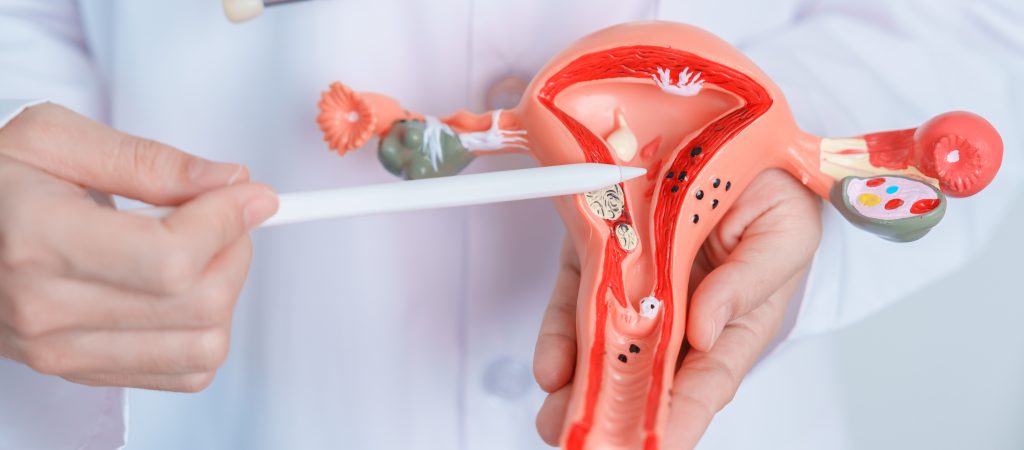Hysterectomy in Türkiye
Hysterectomy is a surgical procedure that removes the uterus and is divided into three parts: partial hysterectomy (the uterus is removed with the cervix left), total hysterectomy (the uterus and cervix are removed) and total hysterectomy with the removal of one or both of the ovaries and fallopian tubes. The methods of ablation differ, including Vaginal Hysterectomy or Abdominal Hysterectomy or Laparoscopic or Robotic Surgical Approach

Why resort to a hysterectomy?
Cancers of the female reproductive system:
A hysterectomy is done if a woman develops cancer of the uterus or cervix after considering other options for radiation or chemotherapy
Fibroids:
Hysterectomy is the permanent solution for benign fibroids that cause continuous bleeding, anemia, and pelvic pain. However, depending on the size of the tumor and the severity of the symptoms, it is not possible to resort to hysterectomy in the case of mild symptoms.
Endometriosis:
It is a growth of tissue similar to the tissue that lines the uterus outside the uterus on the ovaries, fallopian tubes and tissue lining the pelvis. He resorts to the removal of the uterus, ovaries, and fallopian tubes when medications or conservative surgery fail to treat the condition.
Uterine prolapse:
It is a health problem that affects women when the uterus descends towards the vagina due to weak supporting ligaments and tissues, causing incontinence or pressure in the pelvis, so the uterus may be removed to treat the symptoms.

Abnormal menstruation:
A hysterectomy relieves heavy, irregular or prolonged menstrual bleeding when the bleeding cannot be controlled in other ways.
Hysterectomy prevents any chance of pregnancy, so it is important to search for other options and alternatives to this surgery, especially in the case of fibroids, endometriosis and uterine prolapse, but it may be the last and only option in the case of cancer, and all details must be obtained about the extent of the need to remove the ovaries and fallopian tubes, where The latter leads to surgical menopause and affects the quality of life, and the patient may need short-term treatment with hormones.
Risks
Any surgery carries some risks. Risks associated with an abdominal hysterectomy include:
- blood clots.
- infection.
- Suffering from heavy bleeding.
- Adverse reaction to anesthesia.
- Damage to the urinary tract, bladder, rectum or other pelvic organs during surgery, which may require further surgical repair
- Menopause.
- Death is rare.
Preoperative preparations:
Take note: Obtain sufficient information and details, learn about the procedure, its risks and complications, what are the surgical and therapeutic alternatives, and the type of anesthesia used during the operation.
Follow the instructions: First, you must inform the doctor about any over-the-counter medications, nutritional supplements, or herbal preparations, and follow the instructions in the event of changing doses or stopping medications.
Planning for an overnight stay in the hospital: The procedure requires staying in the hospital for at least one to two days.
Outlook: The surgeon separates the uterus from the ovaries, fallopian tubes, and upper vagina, as well as from the blood vessels and connective tissue that support it during a hysterectomy. The cervix may be removed (total hysterectomy) or left (partial hysterectomy). The surgeon may remove the ovaries and fallopian tubes.
Before a hysterectomy:
You must undergo several tests to confirm the presence of any type of cancer or not, and the tests include:
- Pap test: Detects the presence of abnormal cells in the cervix or cervical cancer.
- Endometrial biopsy: This reveals the presence of abnormal cells in the lining of the uterus, or endometrial cancer.
- Pelvic ultrasound: May show the size of uterine fibroids, endometrial polyps, or ovarian cysts.
The following must also be done:
- To shower with anti-infective soap.
- Cleaning the vagina before surgery (douching)
- Rectal cleansing (enema) before surgery.
- Take an intravenous antibiotic medication to reduce the risk of infection after the procedure.
during the procedure:
The operation is performed under general anesthesia and takes about one to two hours. The procedure begins with placing a urinary catheter through the urethra and cleaning the abdomen and vagina with sterile solutions. Then the surgeon makes an incision in the lower abdomen using one of the following two methods:
- Vertical incision: from the middle of the abdomen to below the navel and above the pubic bone.
- Horizontal incision: an inch above the pubic bone in a bikini line.
He chooses between them based on many factors, including the underlying reason behind the hysterectomy, the need for exploration of the upper abdomen, and the size of the uterus and then removed.
after the procedure:
The patient stays in the recovery room for a few hours, and the doctors monitor the patient’s condition and the pain he feels, give medicine to relieve pain and prevent infection, and then encourage the patient to walk a little shortly after surgery. It is also expected to stay in the hospital for a period of one to two days or longer, during which sanitary pads are used for bleeding and vaginal secretions. Bloody vaginal bleeding may continue for several days to weeks, but a doctor should be contacted in the event of severe or continuous bleeding.
Post-procedure care
The period of return to normal life takes about six weeks, during which the following must be followed:
- Get plenty of rest.
- Do not lift heavy objects for six weeks after the operation.
- Maintain physical activity after surgery.
- Avoid strenuous physical activity for the first six weeks.
- Wait six weeks before having any sexual activity.
- Follow your doctor’s other recommendations.
Living after a hysterectomy
The process changes the form of life, for example:
- The disappearance of menstrual periods.
- Relief from previous symptoms that led to surgery.
- Loss of the ability to become pregnant.
- Early menopause if you undergo a premenopausal hysterectomy without removing your ovaries.
- Maintaining sex life Some women even feel more sexual pleasure after hysterectomy.
Hysterectomy in Türkiye

Many patients come to Türkiye to have a hysterectomy. REHABTÜRK provides services for patients with treatment services, in addition to transportation, accommodation and full trip coordination services. Patients receive intensive post-operative care to check their condition and satisfaction after the hysterectomy. In addition to the support provided by the Patient Support Team, which is available 24/7.

